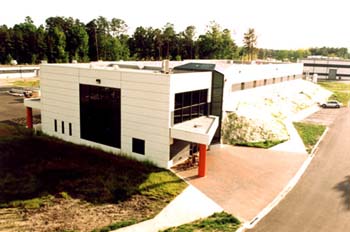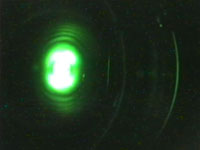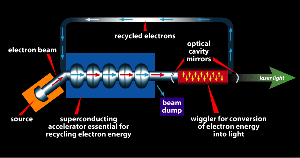Free-Electron Laser Description

Photo of the Jefferson Lab Free Electron Laser building. The laser is on a lower floor, with laboratories located on an upper level.
General Introduction
A Free-Electron Laser (FEL) provides intense, powerful beams of laser light that can be tuned to a precise color or wavelength. Free-electron lasers absorb and release energy at any wavelength, because the electrons are freed of atoms. This key feature enables the FEL to be controlled more precisely than conventional lasers to produce intense powerful light in brief bursts with extreme precision. The lack of a lasing medium in the cavity allows the laser to operate at very high power levels without the usual cavity heating problems.
The Jefferson Lab FEL is based on something called an energy recovered linac which is illustrated above. Electrons are released from the source at the lower left, and are accelerated in a superconducting linear accelerator (linac). After emerging from this linac, the electrons pass into a laser cavity which has a wiggler at its center. This wiggler causes the electrons to oscillate and emit light which is captured in the cavity, and used to induce new electrons to emit even more light. After exiting the optical cavity the electrons then travel around the loop at the top and back into the linac. Here they give up most of their energy to a new batch of electrons, making the process highly efficient.



